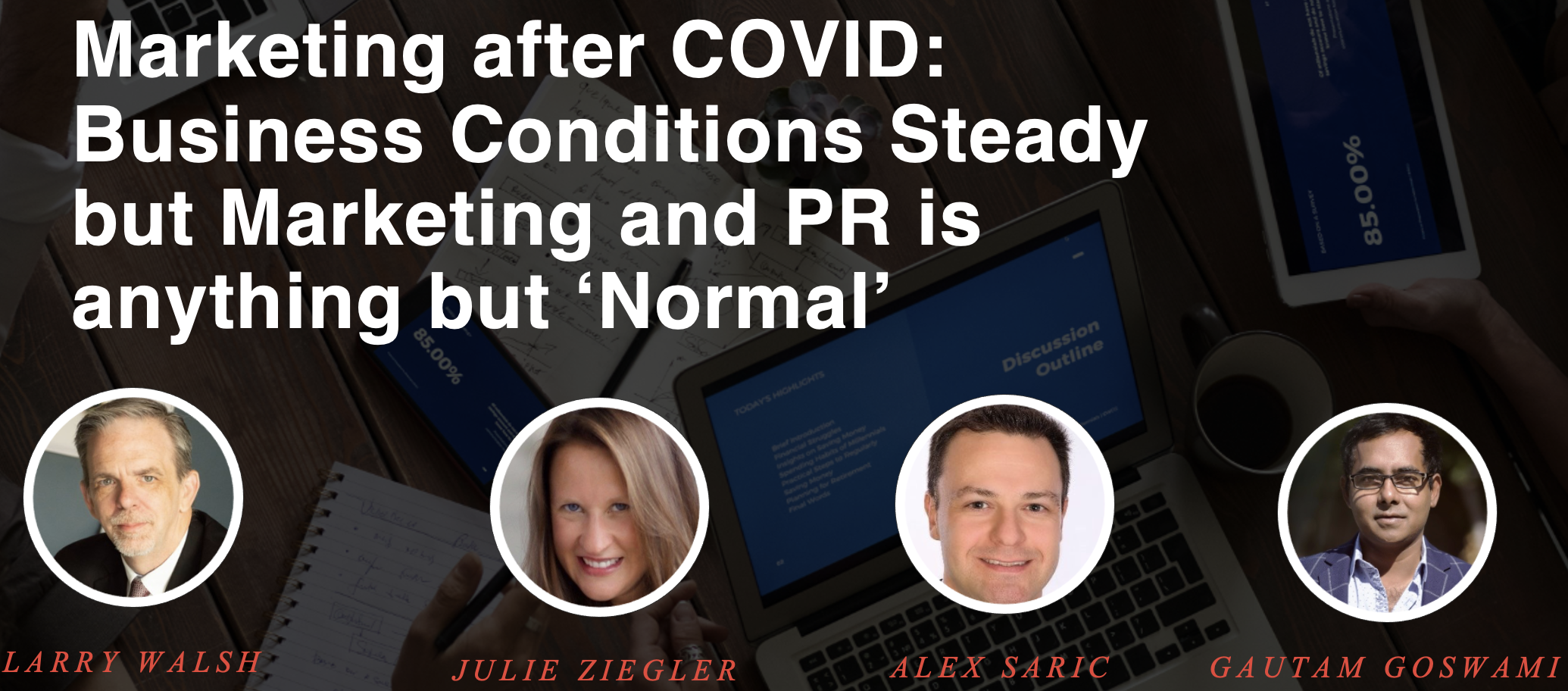
Marketing After COVID: How Marketing and PR Survived the Pandemic
No industry has escaped the impact of Covid-19, and some have fared considerably worse than others. For the survivors, it has meant figuring out ways that essential business functions could navigate this once-in-a-century pandemic – a global health crisis that is still ongoing. But now, they would need to do it with some of their most familiar tools rendered unavailable.
On April 22, three highly experienced marketing leaders took part in a webinar sponsored by Lumina Communications to discuss the impact of the pandemic on their marketing efforts and public relations. Moderated by Channelnomics CEO Larry Walsh, the panelists included Julie Ziegler, Global Marketing Leader for Buck Consulting; Alex Saric, CMO of Ivalua; and Gautam Goswami, outgoing Chief Marketing and Product Officer of TeamViewer.
One important feature of Covid-19, Ms. Ziegler pointed out, is that because the disease is new, what is known about it is continuing to evolve. As a result, changes in a company’s response to the virus have become a recurring feature of its business activity. Agility has become a fundamental requirement for accommodating on-site and remote employees as well as customers and suppliers. However, she pointed out, you can’t please everyone all the time; people’s expectations and comfort levels vary considerably; accommodating them requires time and effort.
What would have been unacceptable in 2019 has now, more than a year into the pandemic, become normal. The work-from-home transition, for many, has affected everything: the ways people dress for work, how they interact with their peers, the length of their attention spans, the expected production values of business presentations, and the impact of virtual interaction on corporate culture, among others.
Conferences, conventions, and other large-scale marketing events have gone away, at least for now, and online substitutes for them have been anemic, according to Mr. Goswami. While people sometimes listen to plenary session speakers at conferences, what really motivates them to attend is the opportunity to meet and interact informally with peers, vendors, customers, and prospects – something that digital formats simply can’t provide. Events planned for the foreseeable future will likely be significantly smaller than in the past.
For those working from home, disruptions of remote conference meetings – technical glitches, dogs barking, children playing, and other family members wandering into camera view – are both frequent and far better tolerated than they would have been in the past – a point Mr. Saric emphasized with a virtual mountain of toilet paper in the background. Long-form content, however, is not well tolerated, meaning that shorter content and message presentations offer a much better fit for the current remote work environment. According to Mr. Goswami, people’s attention online drops off sharply after 10 or 15 minutes.
As far as corporate public relations is concerned, panelists saw a new thirst for information about their responses to the pandemic from local and national media – an interest in the details of business operations and supply chain issues that had not been evident before. Particularly for companies whose products and services help customers survive the pandemic, it was a PR bonanza.
What else did we learn? Look for intense market signals, remain agile, don’t spam people, build breaks into the virtual workday, accept the fact that people think differently, be cautious about employee use of social media, be creative, and don’t be afraid to experiment. The pandemic will someday recede, but its lessons are likely to remain with us for years to come.
